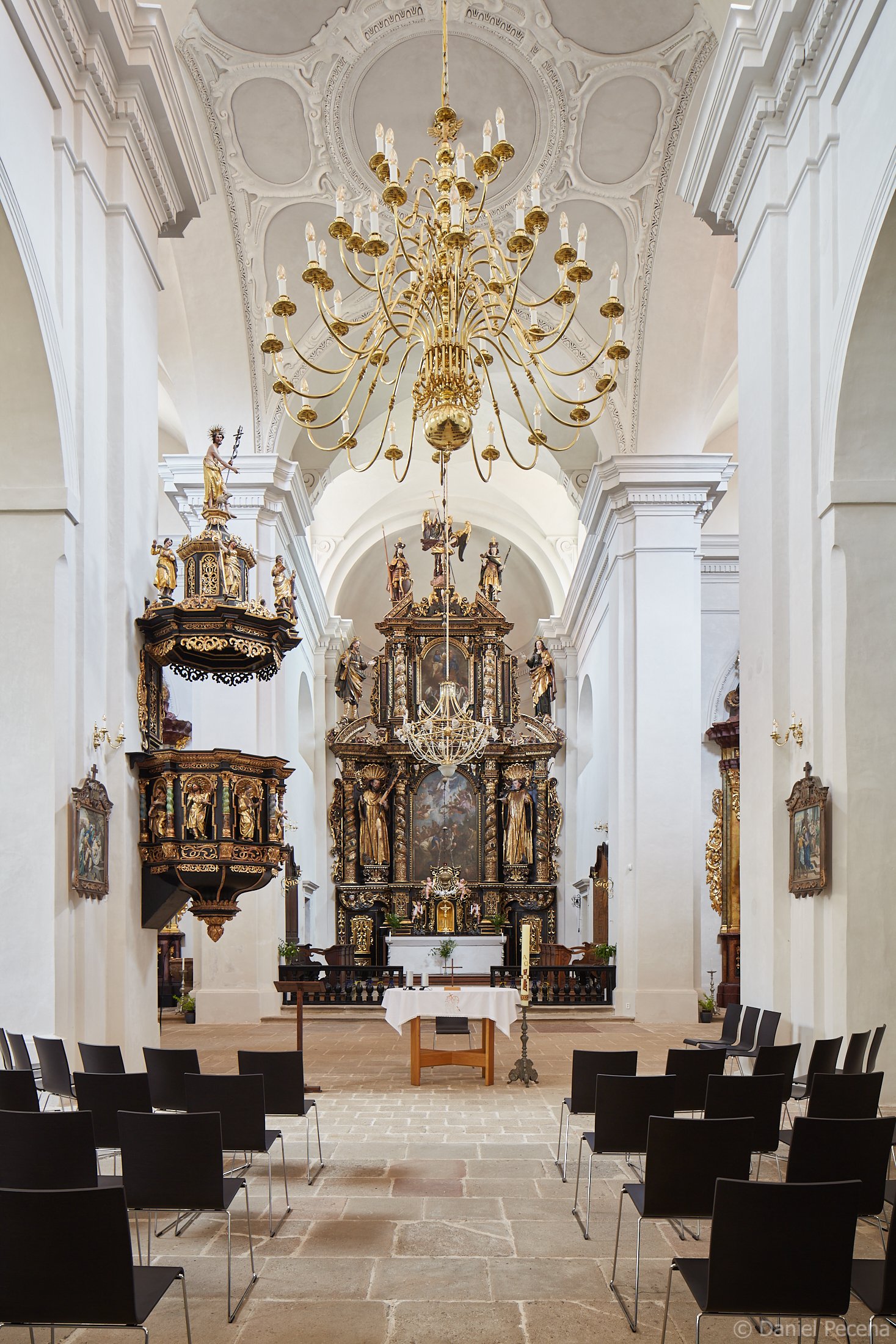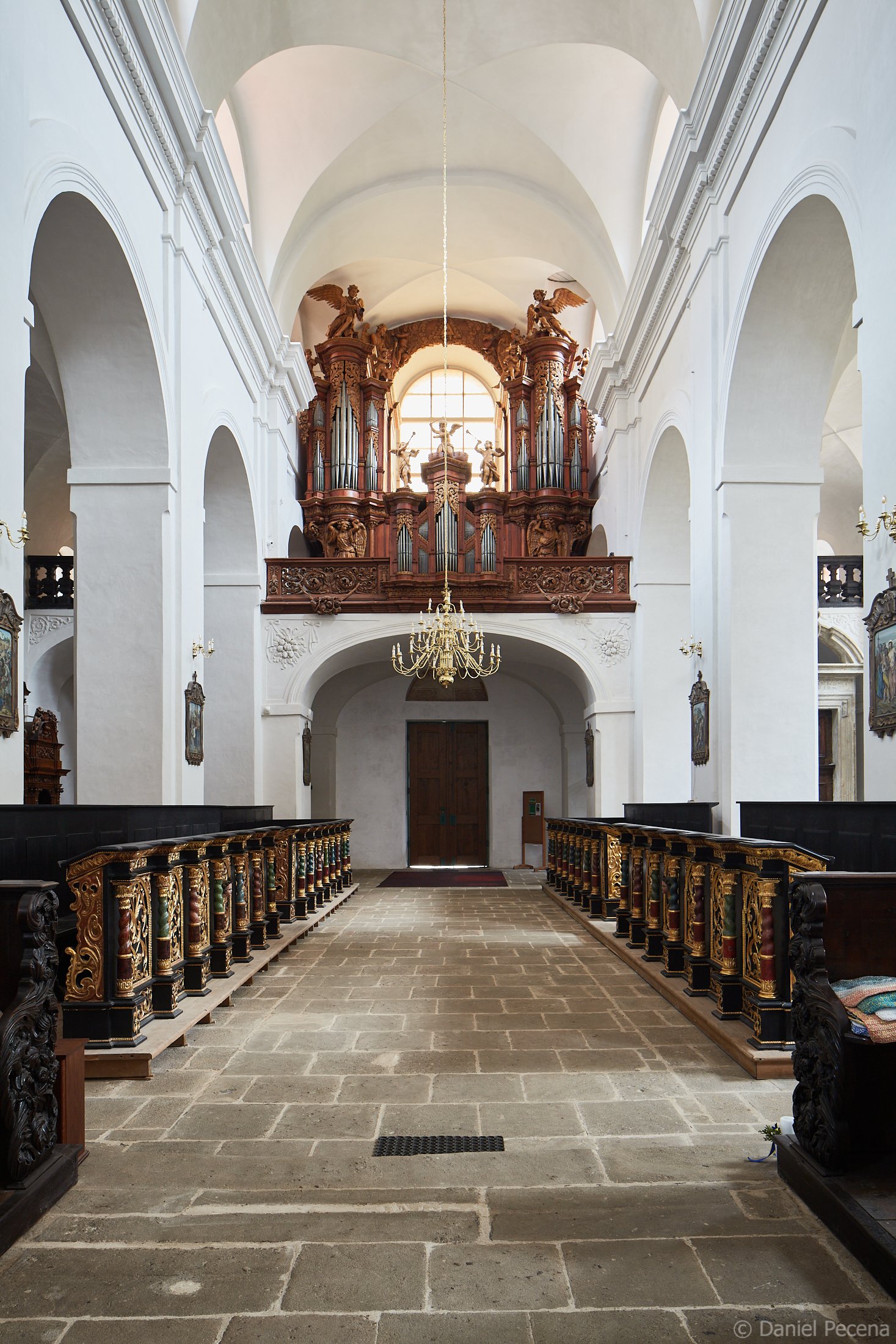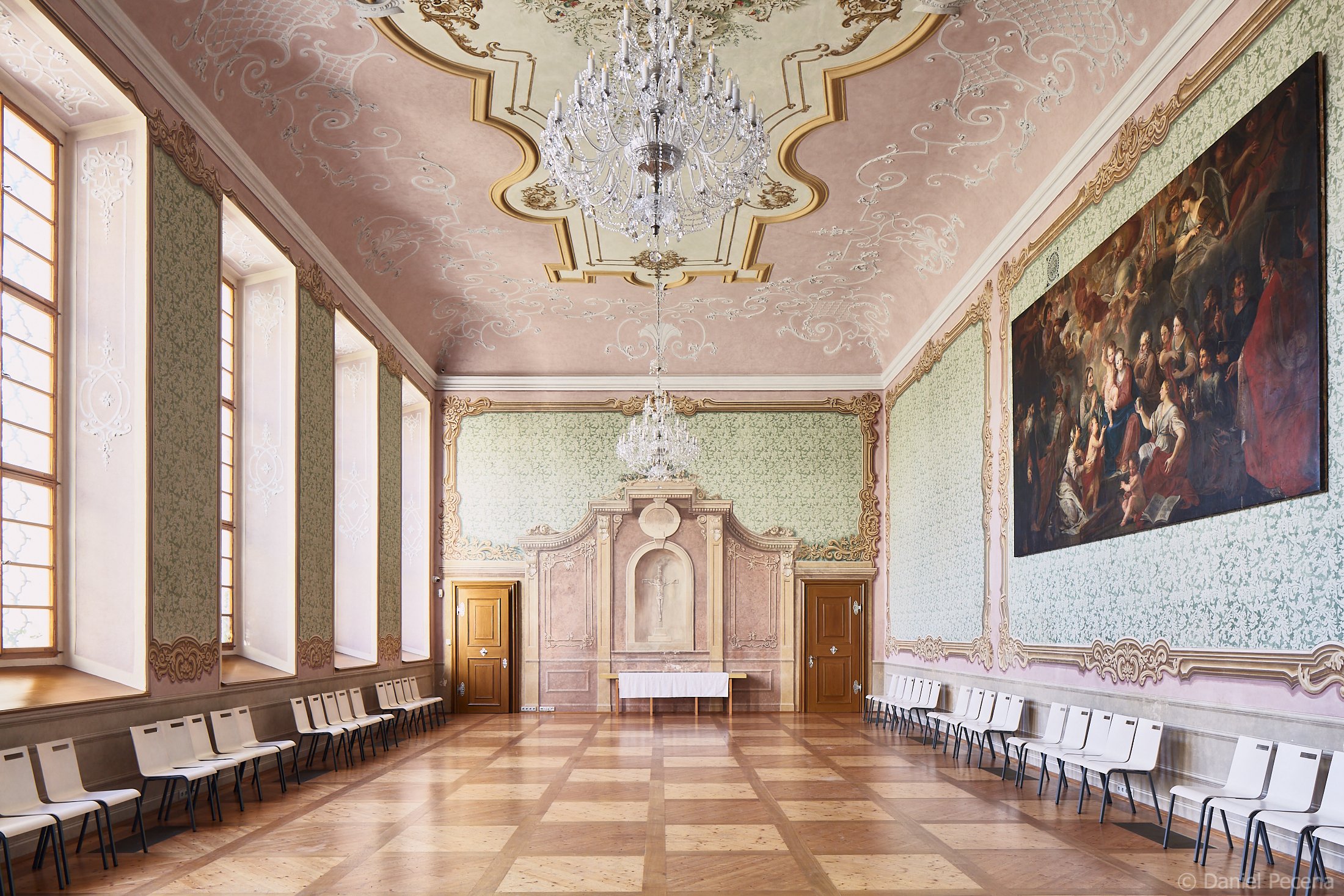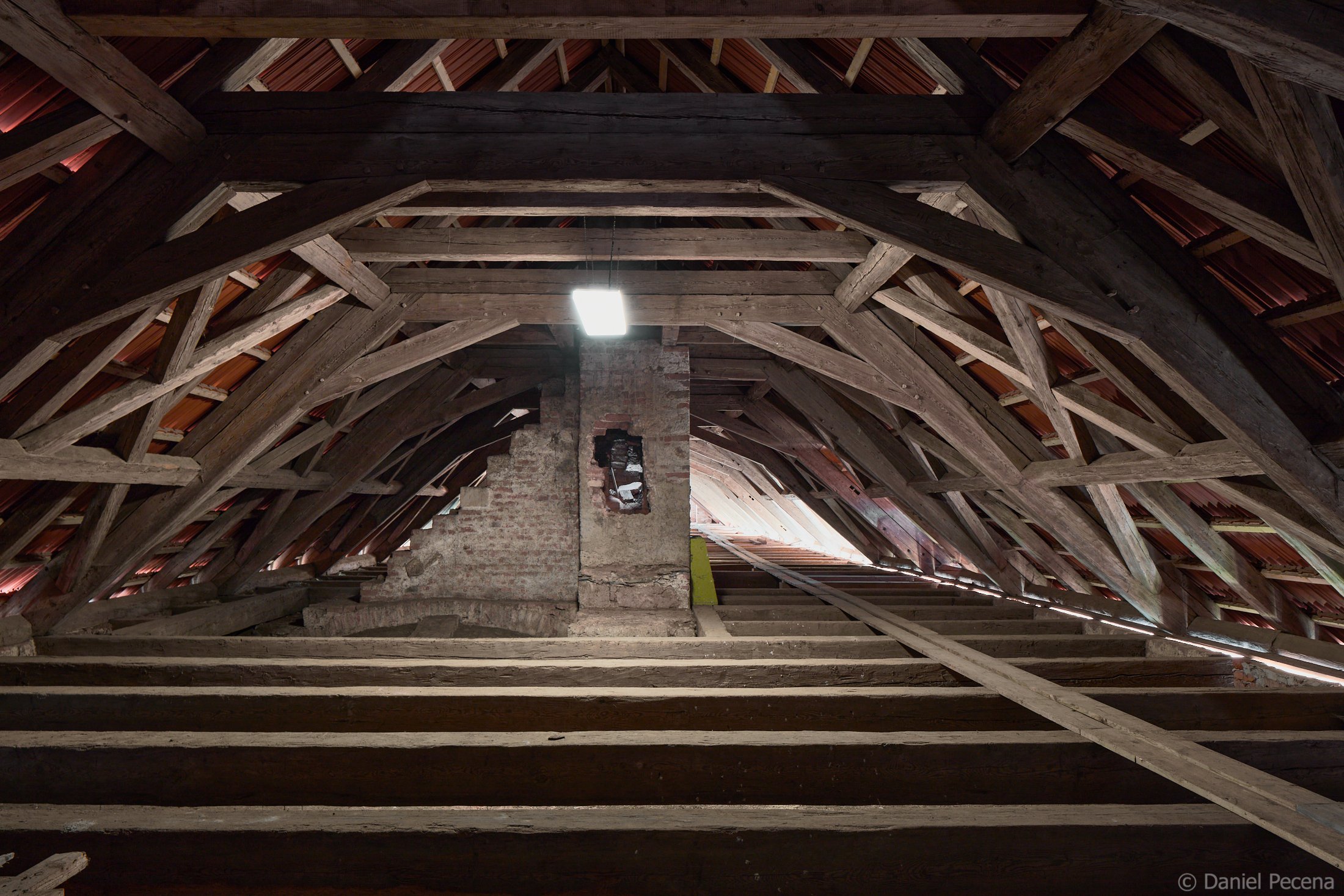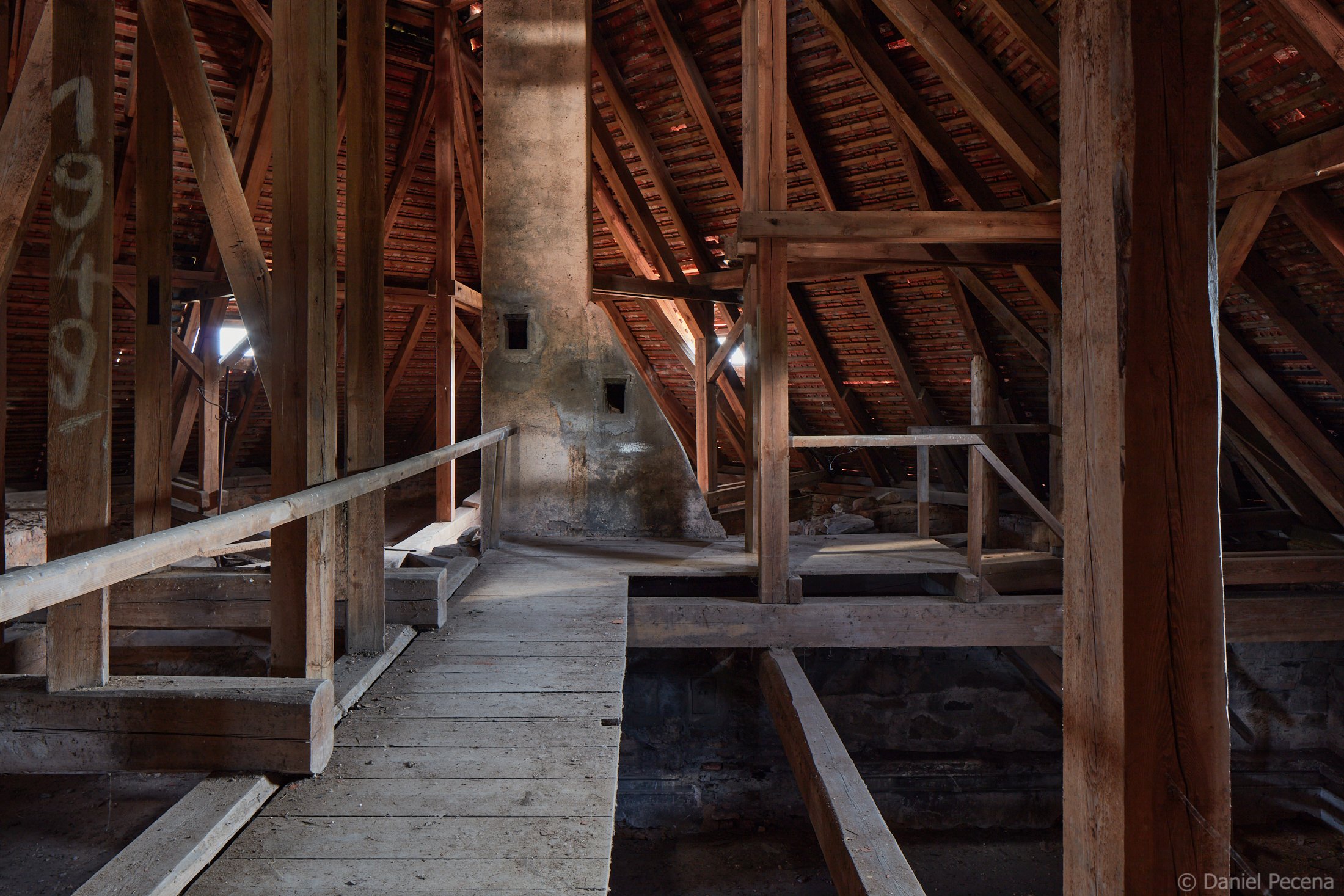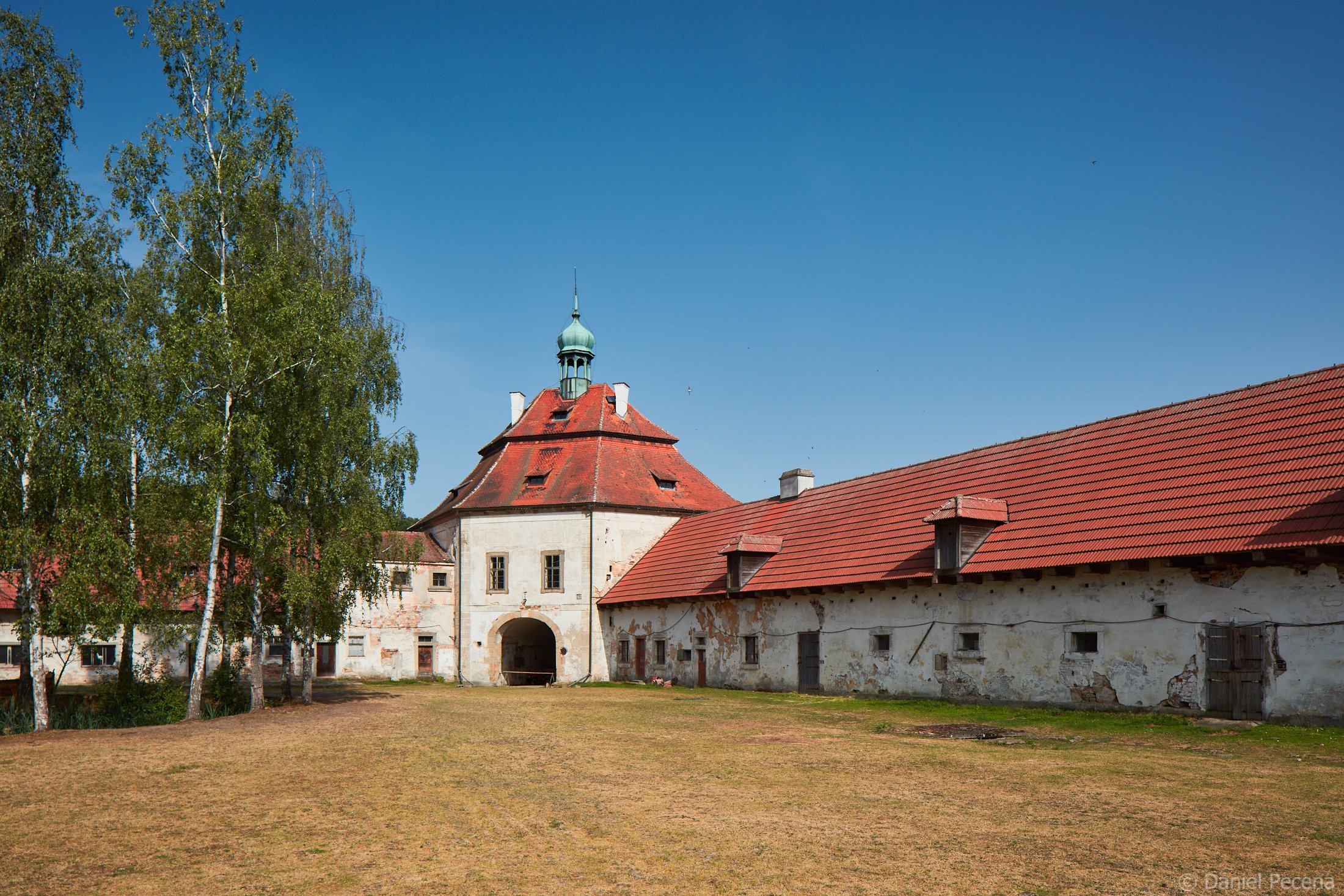Baroque architecture in Europe is relatively ubiquitous. But among the grand buildings spread throughout various European cities there is also unique approach to this style in the form of Czech High Baroque branch that connects Bohemian Radical Baroque style with gothic elements. Naturally, it is simply called Baroque Gothic. The main representative and creative mind behind this style was Jan Blažej Santini Aichel who worked in the beginning of the 18th century on many projects of sacral architecture.
Pilgrimage Church of the Annunciation of the Virgin Mary and Cistercian Provost Office in Mariánská Týnice (1707-1710), Czech Republic
Jan Blažej Santini Aichel (1677-1723) was born in Prague and was baptised in St Vitus cathedral. His father came to Kingdom of Bohemia from what is now Italy and became acclaimed stonemason with his own workshop. Santini started his career as an apprentice in his his fathers’ workshop together with his younger brother František. However, due to Santini’s disability which consisted of paralysis of half of his lower body, it was difficult for him to continue in his father’s footsteps and the workshop was later taken over by his brother. In teenage years Santini took up painting and studied under court painter and copyist Christian Schröder. When he was 19 years old he set off on travels to Austria and Italy where he came across works of architect Francesco Borromini who was leading figure of Roman Baroque architecture. It was during his stay on Italian peninsula when he adopted his father’s name Santini and this name stuck to him ever since.
Santini started to design buildings in 1700 and participated in many reconstructions as well. He is well known for using complex geometry and symbolism as well as numerology and great acoustics in his designs. Some of his buildings display elements of Christian mysticism as well. The playful use of natural light helps to depict the grandeur of interiors in astonishing ways and details. Santini was also no stranger to deployment of elaborate technological solutions. For example, the Convent of Cistercian Monastery in Plasy is uniquely built on marshy ground in floodplain of local river Strela. The foundations are made of 5,100 oak piles on which he laid a grate consisting of nearly 1700 wooden beams. This structure is permanently flooded in order for the oxygen to be kept out (without the oxygen the submerged oak wood solidifies) and to this day the water levels are checked twice a day as without constant replenishment of water by the canal dug here from river Strela, the building would crash down. This convent reconstructed by Santini during 1710-1740 is a technological marvel not only due to its large scale but also small details within the premises of the place.
Santini died in Prague in relatively young age of 46 years old. Throughout his life he designed 80 architectural works and the Pilgrimage Church of Saint John of Nepomuk in Žďár nad Sázavou is now UNESCO World Heritage site. Many of the convents and monasteries he designed, are accessible to visitors as part of guided tours. Some of the churches with marvelous acoustic properties also host musical concerts.
Asteroid 37699 Santini-Aichel, discovered in Kleť Observatory in 1996 is named in his honour.
View of the dome of Monastery Church of the Assumption of Virgin Mary, St Wolfgang and St Benedict in Kladruby (1711), Czech Republic
The ceiling above altar in Monastery Church of the Assumption of Virgin Mary, St Wolfgang and St Benedict in Kladruby (1711), Czech Republic
Monastery Church of the Assumption of Virgin Mary, St Wolfgang and St Benedict in Kladruby (1711), Czech Republic
Altar in the Monastery Church of the Assumption of Virgin Mary, St Wolfgang and St Benedict in Kladruby
The nave in Monastery Church of the Assumption of Virgin Mary, St Wolfgang and St Benedict in Kladruby
Pilgrimage Church of the Annunciation of the Virgin Mary and Cistercian Provost Office in Mariánská Týnice (1707-1710), Czech Republic
The dome of the Pilgrimage Church of the Annunciation of the Virgin Mary and Cistercian Provost Office in Mariánská Týnice (1707-1710), Czech Republic
View from the cloisters of the Pilgrimage Church of the Annunciation of the Virgin Mary and Cistercian Provost Office in Mariánská Týnice
Interior of the Pilgrimage Church of the Annunciation of the Virgin Mary and Cistercian Provost Office in Mariánská Týnice
South view of Pilgrimage Church of the Annunciation of the Virgin Mary and Cistercian Provost Office in Mariánská Týnice (1707-1710), Czech Republic
North view of Pilgrimage Church of the Annunciation of the Virgin Mary and Cistercian Provost Office in Mariánská Týnice (1707-1710), Czech Republic
Convent of the Cistercian Monastery in Plasy, Czech Republic
Model of the Convent of the Cistercian Monastery in Plasy, Czech Republic
Nave and altar of the Convent Church in Plasy monastery
Nave and organ in the Convent Church in Plasy monastery
Study in Library wing of the Convent of the Cistercian Monastery in Plasy, Czech Republic
Dome of the St Bernard Chapel in the Convent of the Cistercian Monastery in Plasy, Czech Republic
The statue of Dream of St Lutgardis is plaster copy of the statue of the same name carved by Matyáš Bernard Braun for Charles Bridge in Prague
The ceiling frescoes in cloister of the Convent of the Cistercian Monastery in Plasy, Czech Republic
Capitular Hall in the Convent of the Cistercian Monastery in Plasy, Czech Republic
Great Hall in Benedictine Monastery, Rajhrad, Czech Republic
Hubenov (1734) - inside the roof frame
Hubenov - inside the roof frame
Hubenov (1734) - inside the roof frame of Abbot’s Manor tower
Hubenov (1734) - Farmstead with Abbot’s Manor
St. Prokop’s Church in Všehrdy (1723)
Kozojedy Church (1727)
Mladotice Chapel (1710) - the first Santini’s building
Mladotice Chapel
Mladotice Chapel (1710) - ceiling view
















